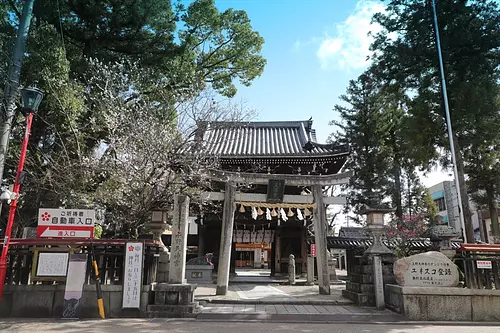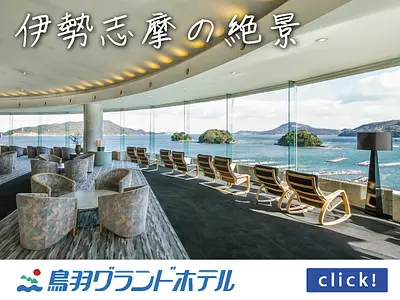The Ueno Tenjin Festival is majestic! Scary! Gorgeous! I can't stop feeling elated!
掲載日:2020.08.18
The Ueno Tenjin Festival, which has a history of over 400 years and is said to be one of the three major festivals in Kansai, is also designated as a UNESCO Intangible Cultural Heritage.
From the procession of the majestic mikoshi to the procession of over 100 demons to the nine huge and gorgeous danjiri floats, the parade continues through the castle town. The scene is so powerful that it's like stepping into a historical movie! [Interview date: October 2019]
This article introduces the charms of Mie Prefecture for foreigners who use traditional Chinese, so your perspective may be a little different, but please enjoy it as well.
Traditional Chinese article: “Ueno Tenjin Festival” 莊嚴! Astonished! Luxurious! The whole story of the live historical film, the whole story! Eyeless salary! !
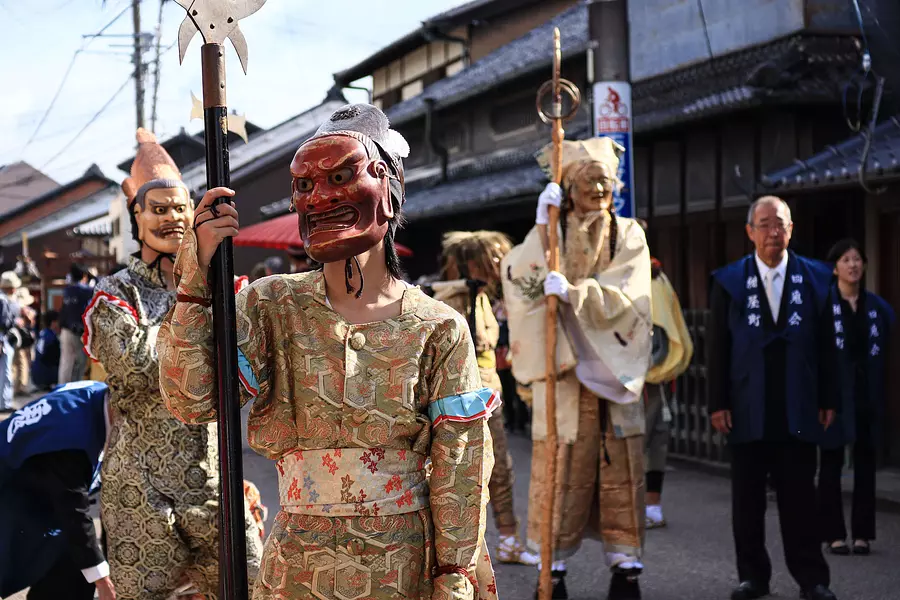
The Ueno Tenjin Festival is like a staged movie!
It is a festival where the main characters of history pass before your eyes in vivid form.
Japan's god of learning
Founder of mountain worship Shugendo
Japan's most powerful military commanders appear one after another!
Direct each story.
The participants came together as one and remained enthusiastic for three days until the very end.
Of course, I was impressed by the splendid procession and danjiri, but what moved me most was the sense of mission and strong pride of the IgaCity to pass down the festival.
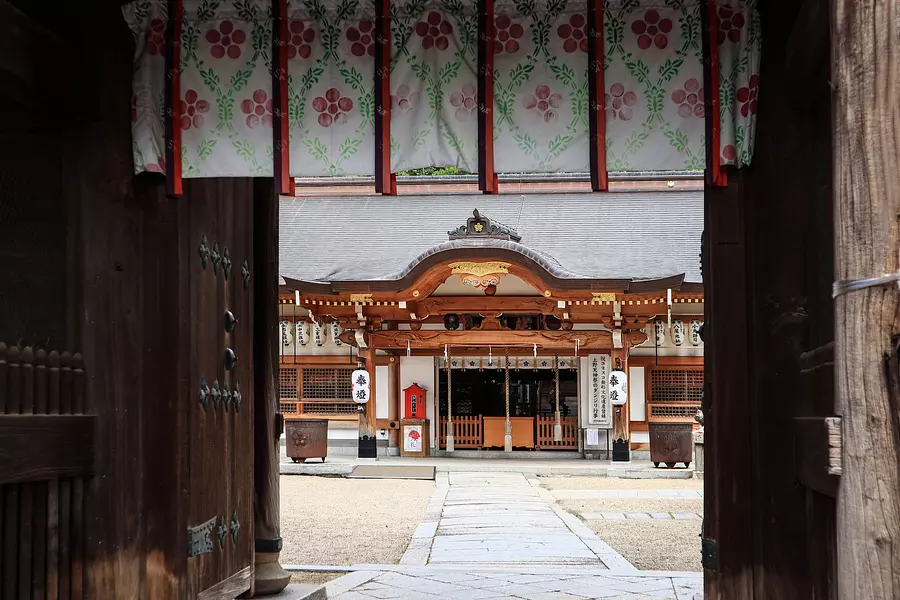
The main character of this festival is Tenjin of Ueno Tenjingu Shrine.
In other words, it is Michizane Sugawara, the god of learning.
Ueno Tenjingu Shrine, which used to be located in Iga Ueno Castle, was moved to its current location by TakatoraTodo in 1611 when the castle town was being built, and was enshrined as the guardian of the castle.
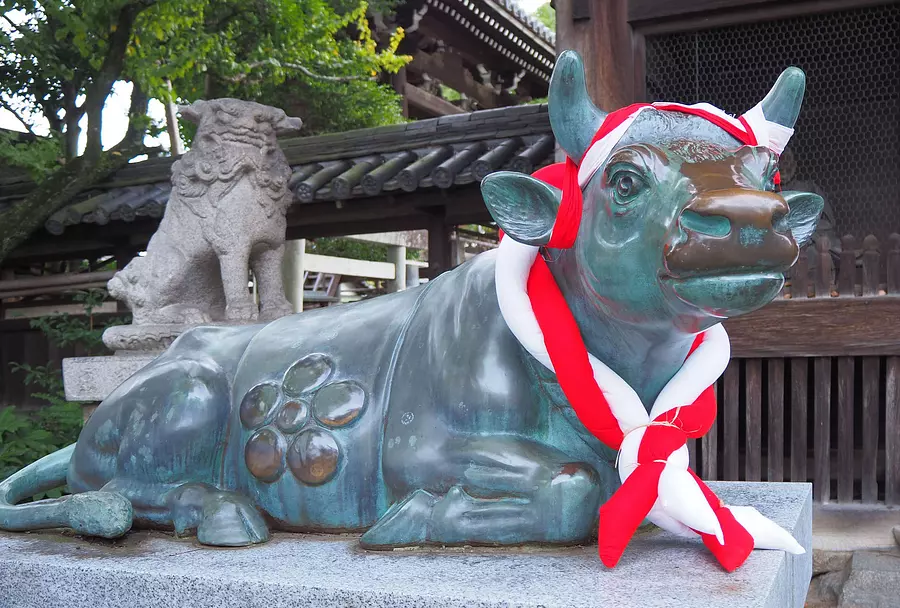
The seated bull statue, which was Michizane's divine messenger, was decorated with a red and white celebratory rope.
It has been believed since ancient times that if you stroke this seated cow statue, you will become smarter and heal from illness and injury.
That's why the seated cow statue is so shiny.
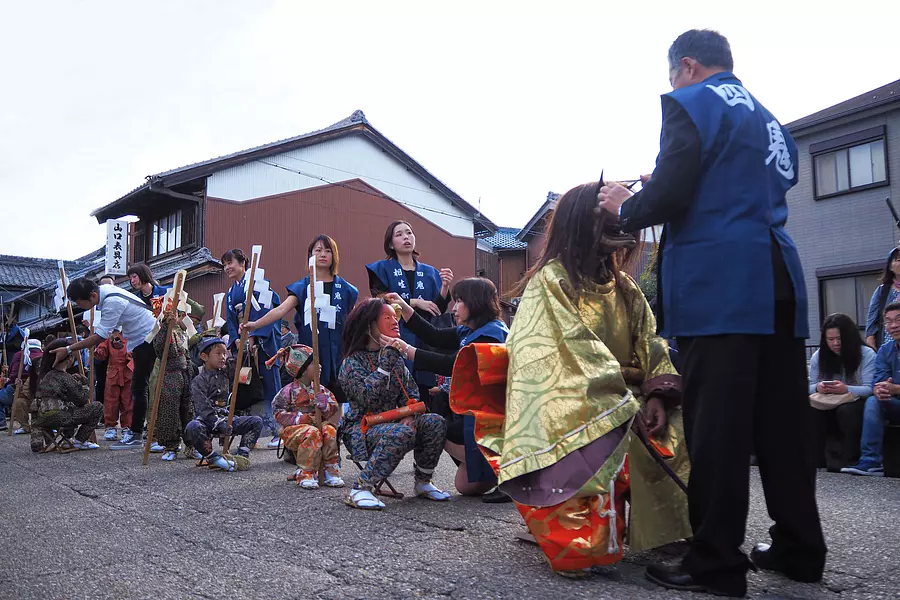
The Ueno Tenjin Festival, which has a history of over 400 years, is held every year on Friday, Saturday, and Sunday in late October.
This time, I participated on the third day of the main festival parade, when the gubu, demons, and danjiri were all in town.
The race starts at 9:00 a.m. from Higashi Otabisho.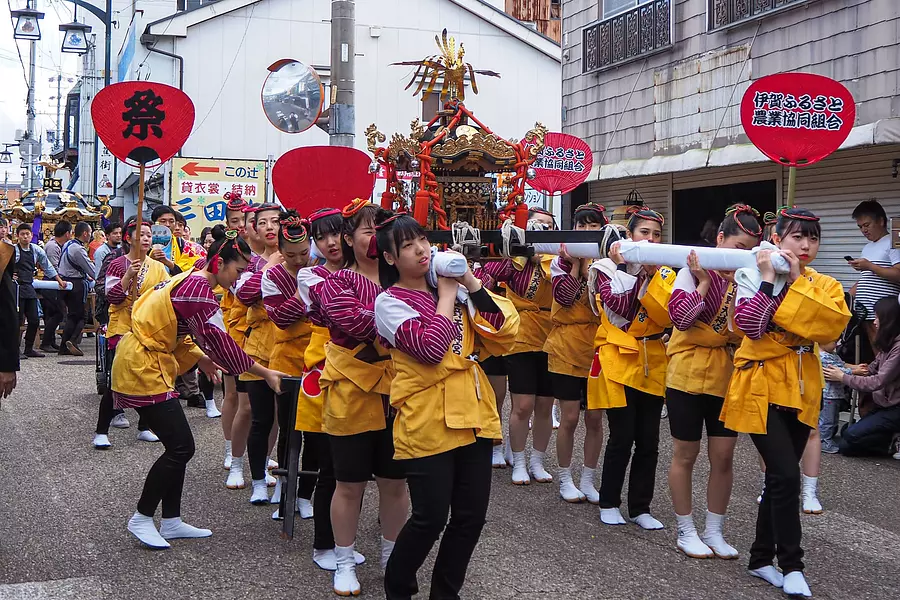
The photo shows a mikoshi carried by a woman.
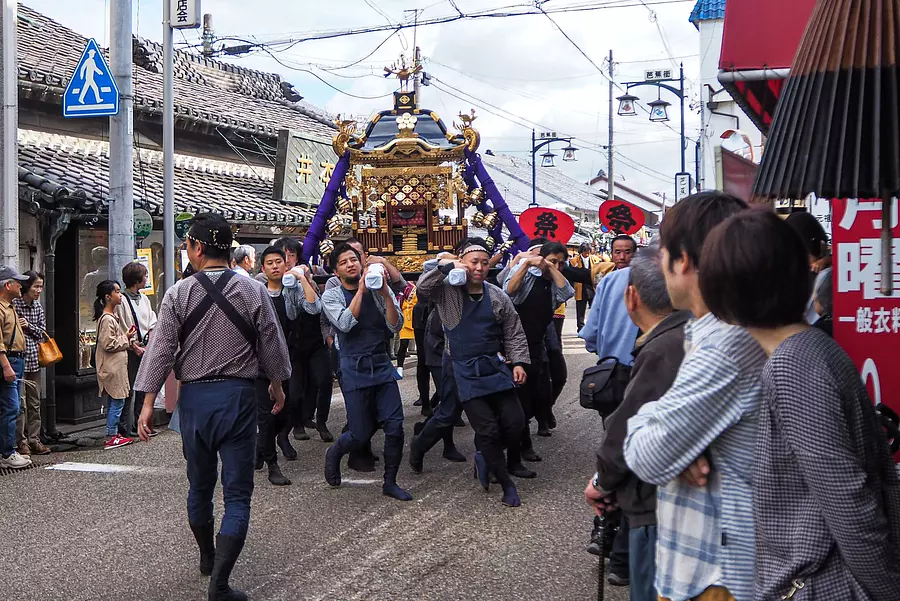
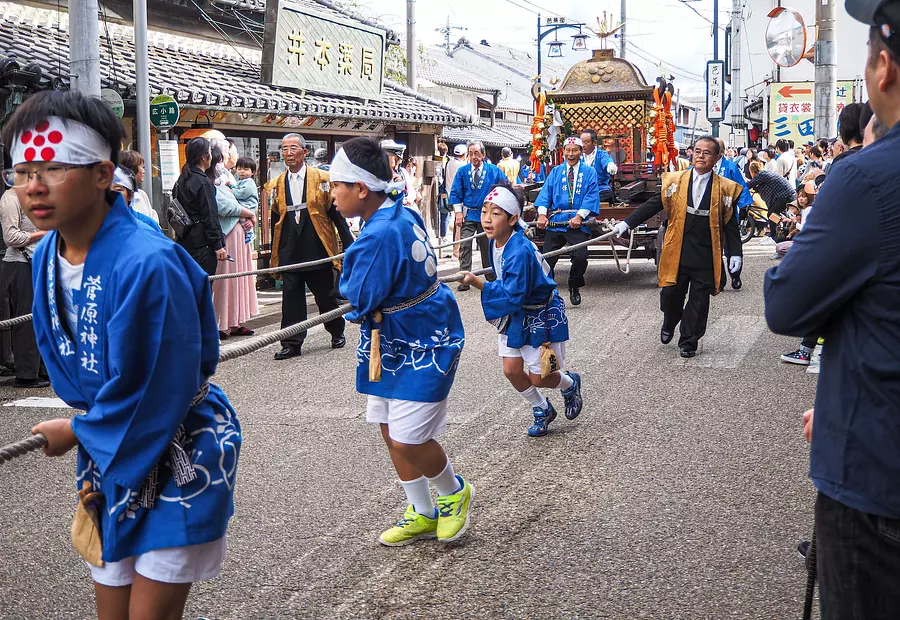
Small children also parade around while pulling the ropes of the mikoshi.
Parents record their children's growth and inherit the festival by taking pictures of them.
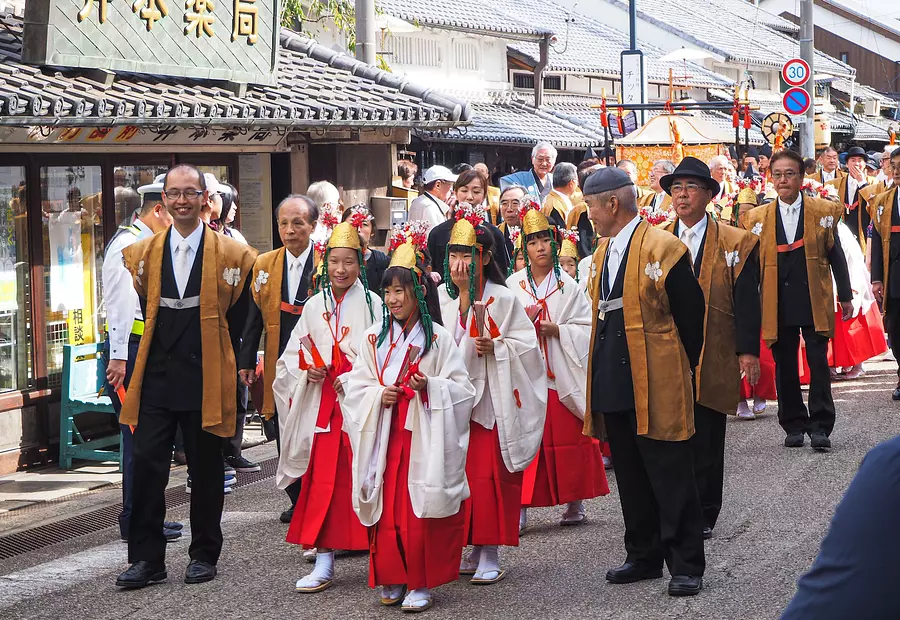
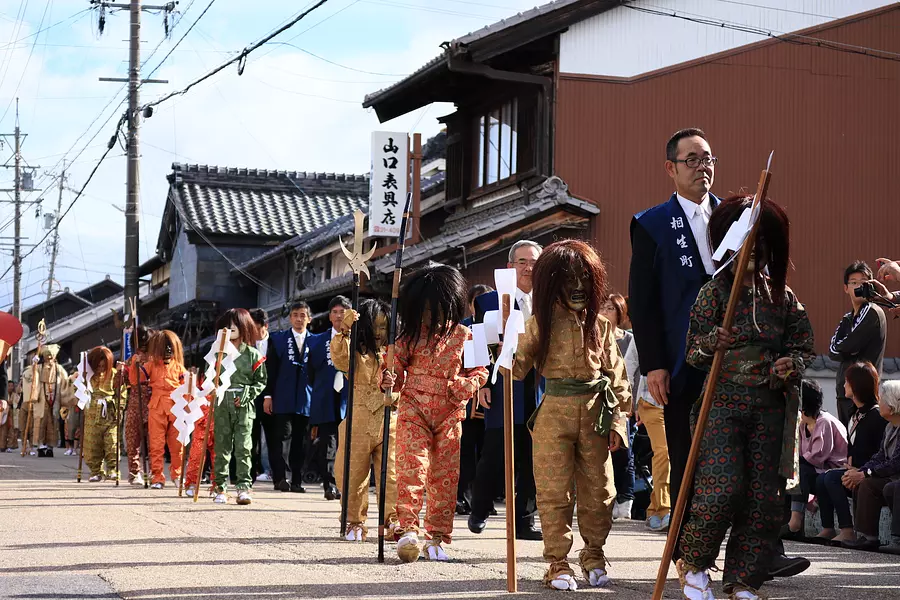
Following the mikoshi procession is a demon procession consisting of En no Gyoja line and Chinzei Hachiro Tametomo line.
Both have the role of subjugating demons and dispelling evil plagues.
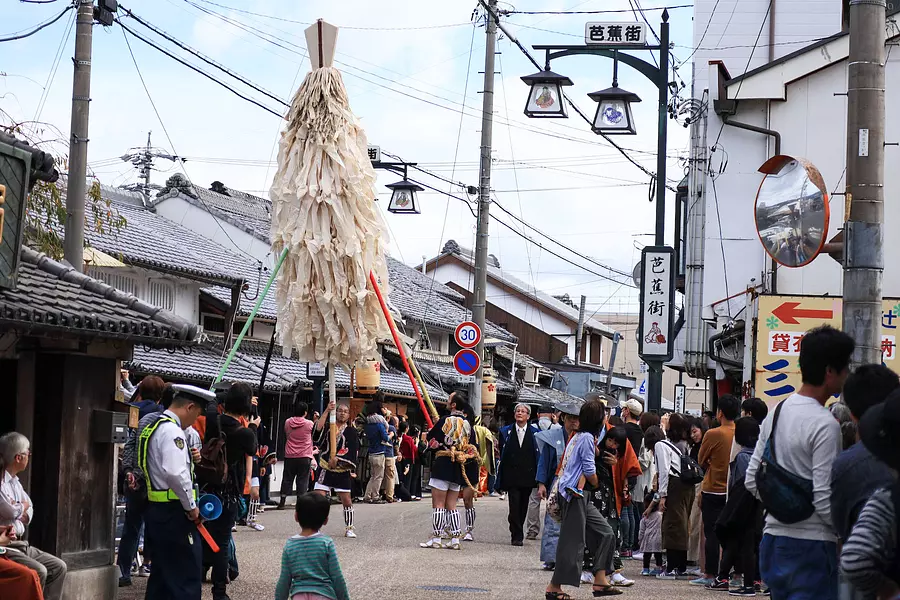
Based on the five elements of yin and yang, the central pillar is painted white, and the four pillars are painted blue in the east, red in the south, yellow in the west, and black in the north, and it is said that oaki o reside in each pillar.
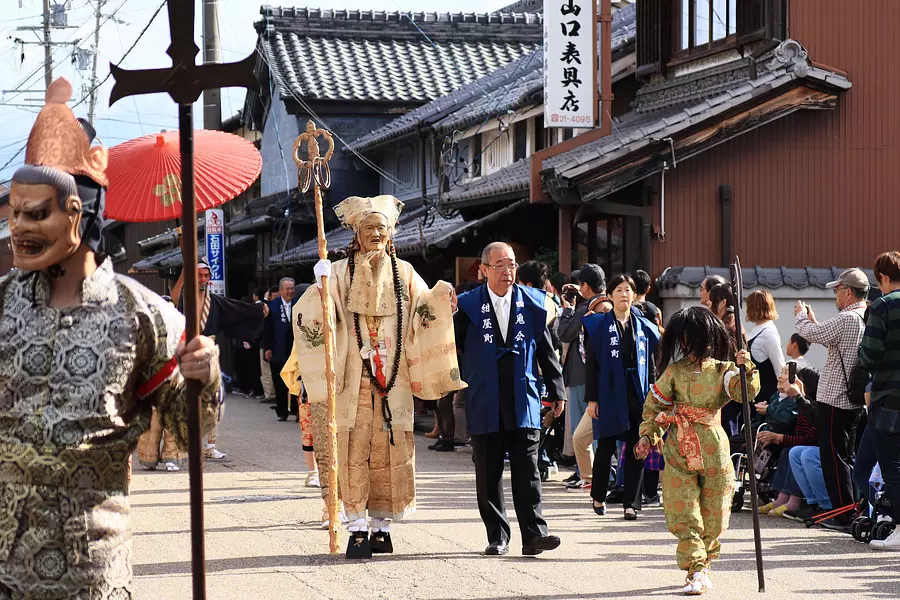
This procession depicts Enno Gyoja entering Mt. Omine accompanied by demons, and is said to have been added to the Ueno Tenjin Festival from around 1688 to 1704.
It is said to be the originator of the Iga-ryu ninja movement, and it is said that the mask was donated to the first lord of the TakatoraTodo, in return for his quick recovery from his eye disease as a result of his prayers.
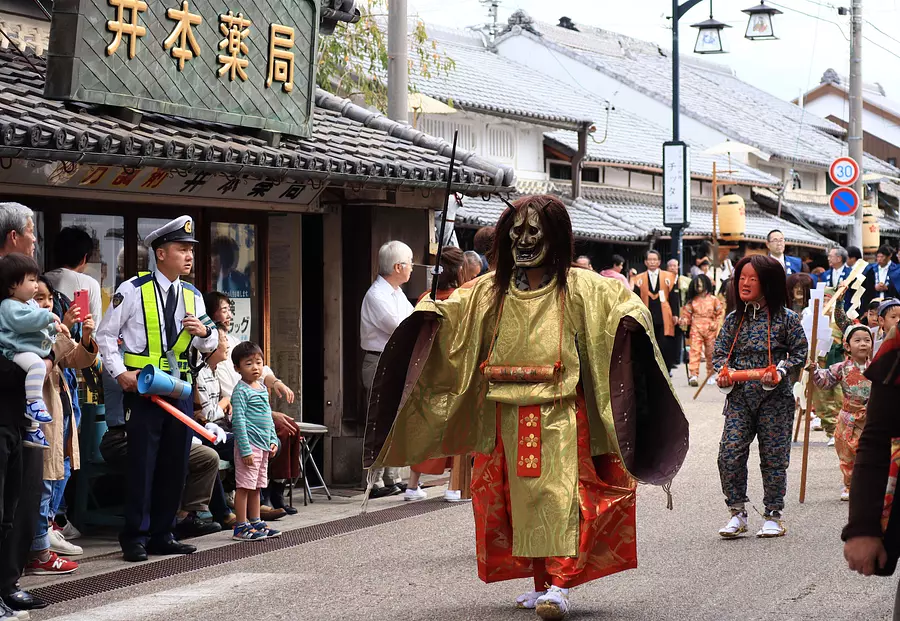
"Evil" doesn't mean evil, but rather someone with excellent physical strength.
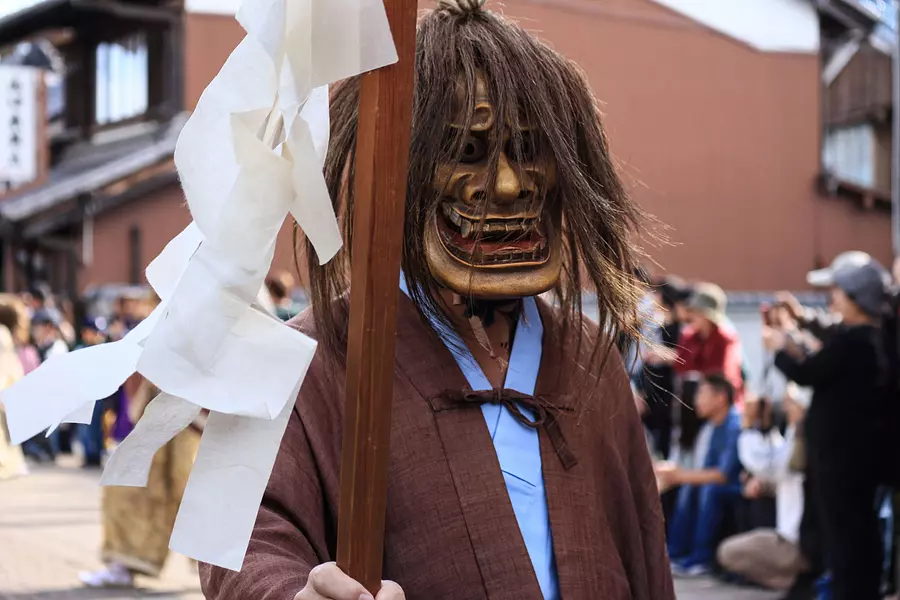
This is the ``Oimochi'' of the Haunted Demon.
There are 4 spindly demons.
When it wanders around town as if to attack the audience, its frightening yet humorous gestures make adults laugh and children cry.
The sight of children screaming and saying, ``I'll be a good boy...'' seems to be a uniquely Japanese culture.
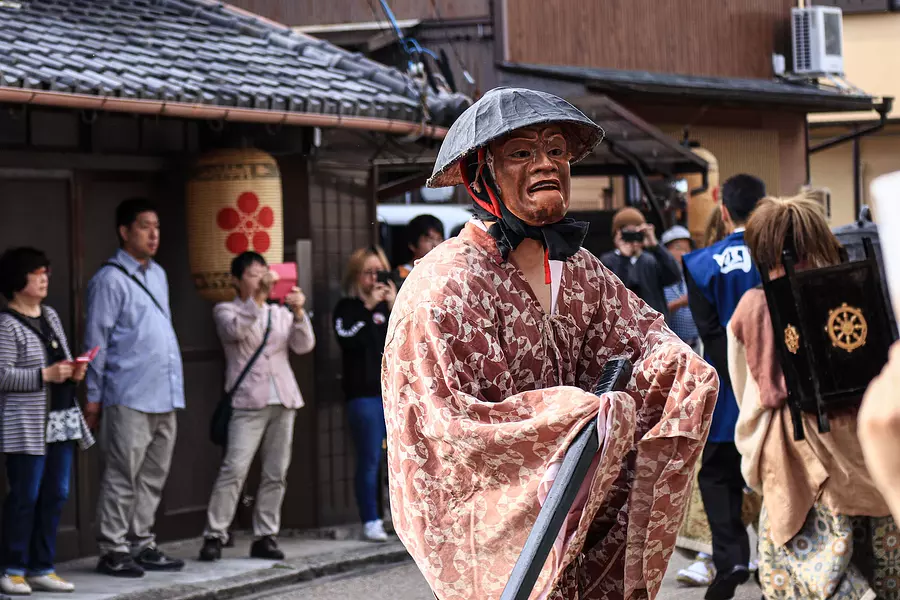
This is the ``Yokimabushi'', a spindly demon.
The faces of the spindly demons are scary, but they also look kind.
They were very impressive demons.
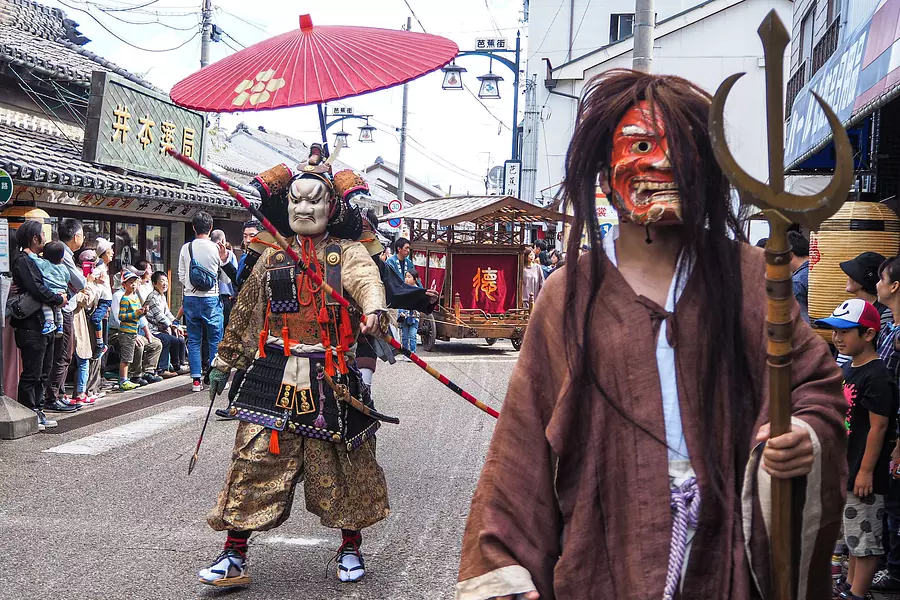
Chinzei Hachiro Tametomo was said to have been over 7 shaku in height, and the length of his bow was 8 shaku and 5 sun, and was described as ``Japan's most skilled archer, Oya Takesho.''
It seems that the descendants of Chinzei Hachiro Tametomo invented this procession and added it to the Ueno Tenjin Festival around 1789-1801.
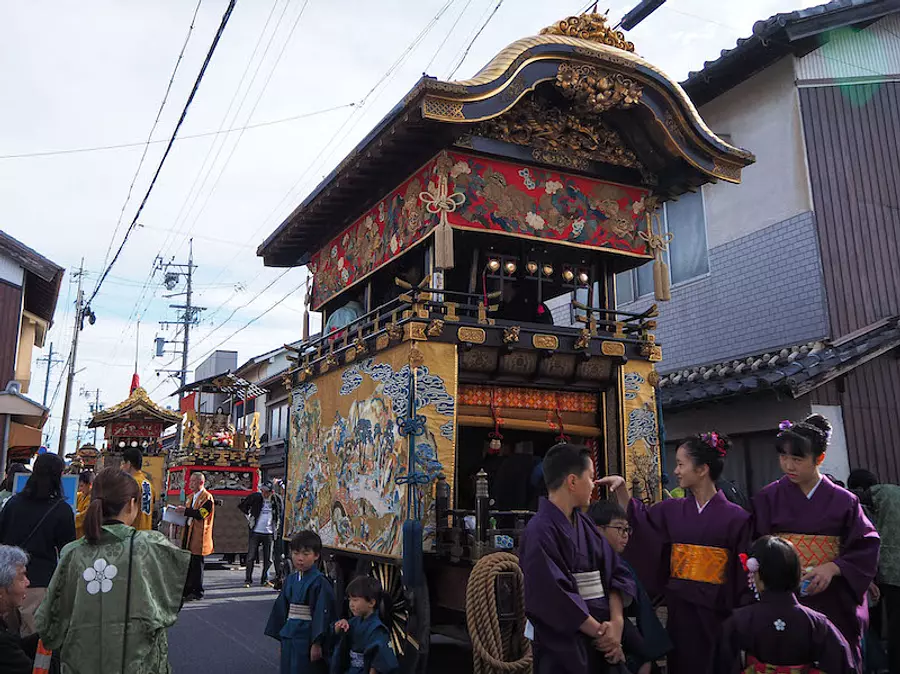
Following the demon procession are nine danjiri.
Each of the nine towns in IgaCity has inherited these with pride.
From the carvings on the gables to the embroidery on the curtains, each piece has its own historical value and artistry, and the gorgeous decorations are a sight to behold.
They also play their own tunes as they cruise, making it very lively.
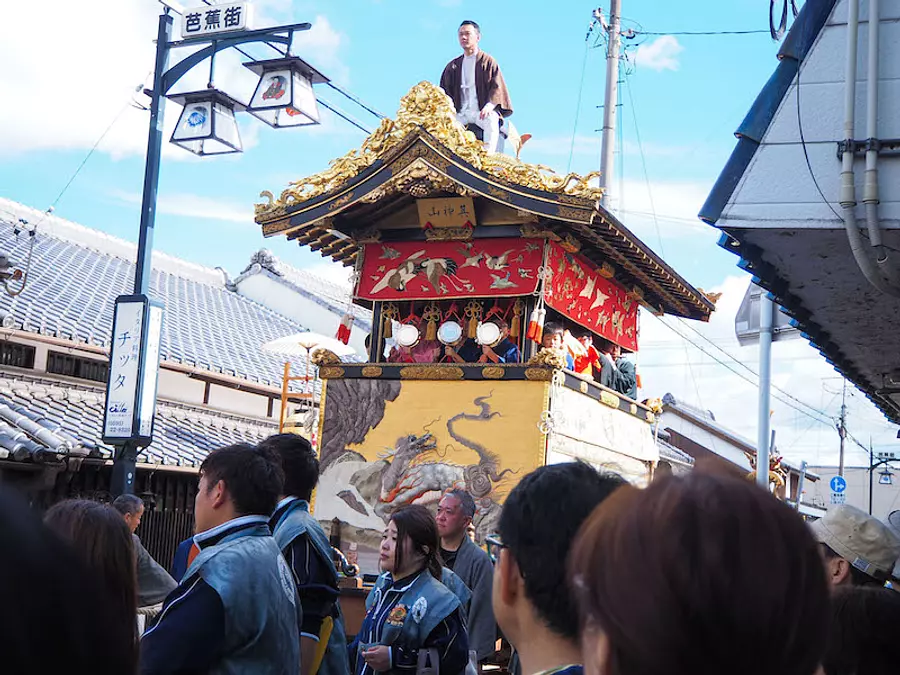
It was built in 1759 and has undergone renovations since then to its current state.
People sit on tall danjiri dolls with three-dimensional giraffes embroidered on the front curtain, making them look very brave.
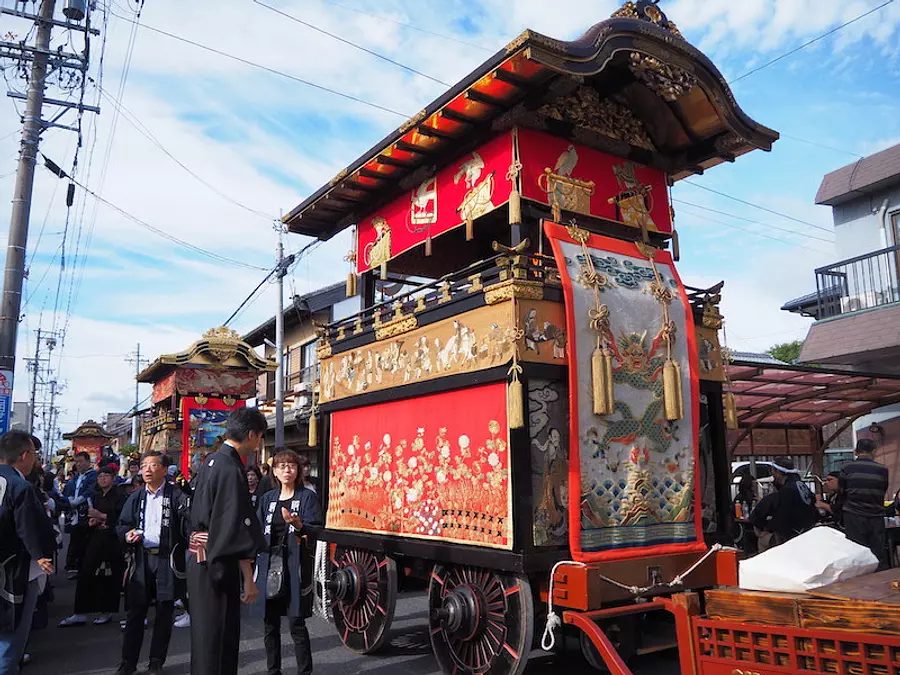
The farewell curtain's ``Yunryu pattern'' is a Chinese Ming Dynasty tapestry weaving mixed with peacock hair and is a cultural property designated by Mie Prefecture. The ``Picture of chrysanthemums on a fence'' on the main curtain is an embroidery modeled after Sue Yuanmei's drinking poem ``Chrysanthemums on a fence and a leisurely view of Nanzan''.
It is said that it is on permanent display at the Danjiri Kaikan except during festivals.
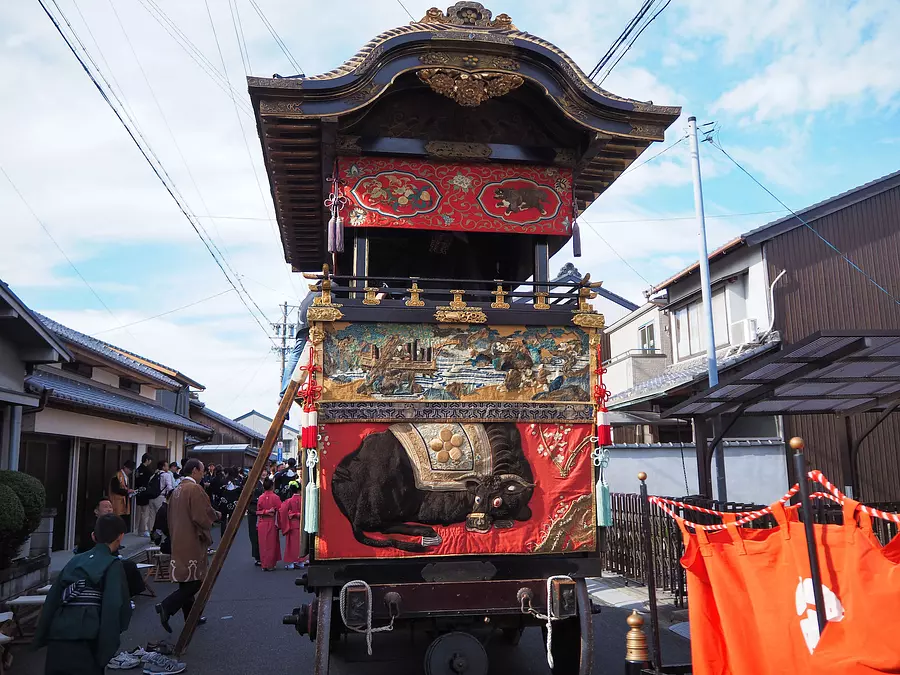
The Ueno Tenjin Festival is a luxurious festival that pays respect to Tenjin's history and culture, as well as a festival to give thanks for a good harvest and to pray for the exodus of epidemics. It's worth seeing, so if you're a festival lover, come and experience the Ueno Tenjin Festival, which is both powerful and delicately beautiful.
Access: Iga Railway Iga Line "Uenoshi Station".
Date: Late October.
Location: Near Ueno City Station.
Official website: https://www.ueno-tenjin-matsuri.com/
[Danjiri event and Oni procession have been canceled in 2020. A ritual is scheduled to be held. ]
| Category | |
|---|---|
| season | |
| area |

